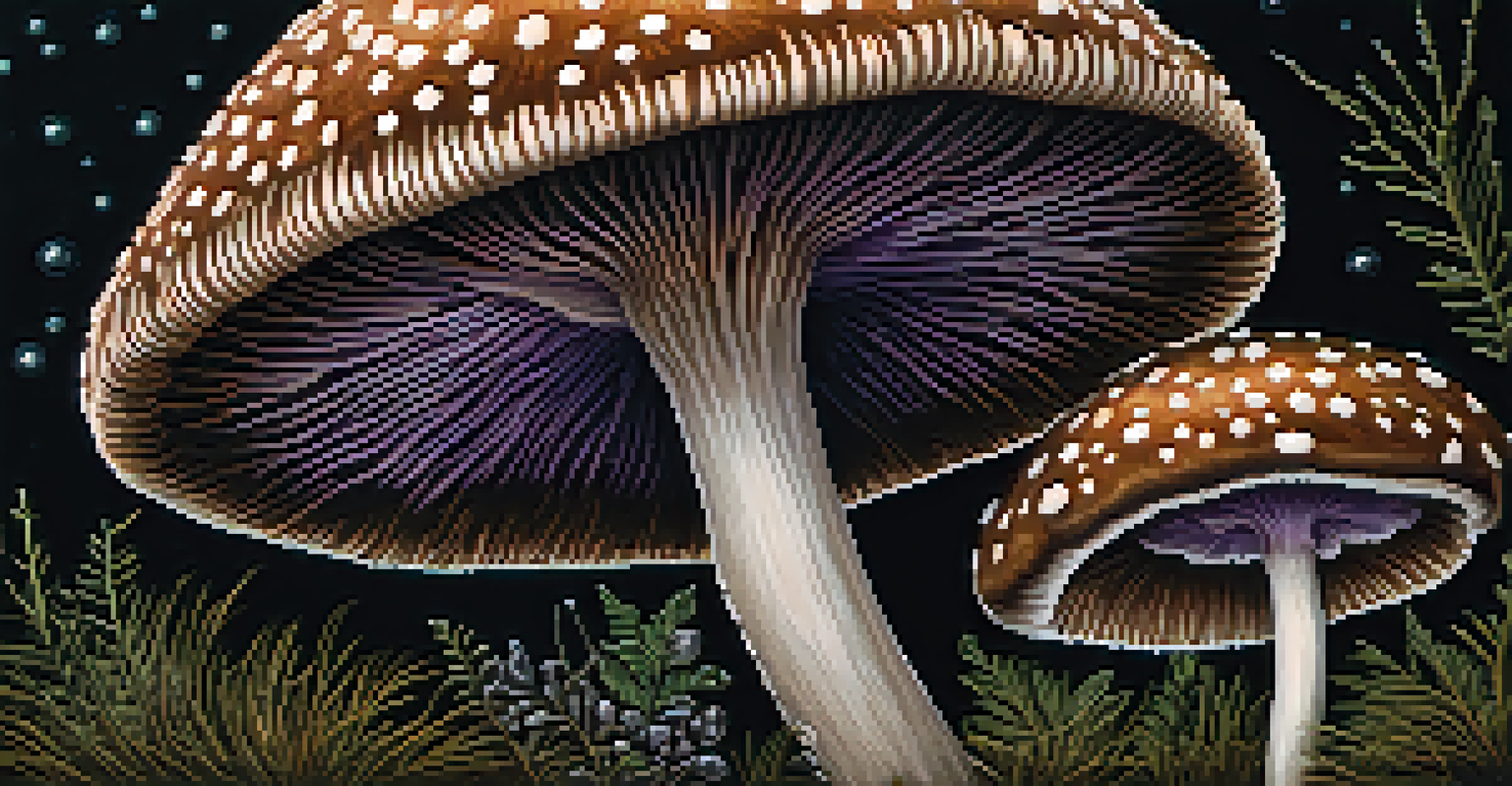The Role of Entheogens in Spiritual Practices Worldwide

Understanding Entheogens: A Brief Overview
Entheogens are substances that are used in a spiritual context to elicit altered states of consciousness. They often include plant-based materials like psilocybin mushrooms or peyote. These substances have been utilized for centuries across various cultures to enhance spiritual experiences and connect with the divine.
The experience of the divine is not the prerogative of the few, but the birthright of all.
The term 'entheogen' itself derives from Greek, meaning 'generating the divine within.' This highlights the core idea that these substances are not just recreational but serve a deeper purpose in many spiritual practices. They are considered sacred tools in various traditions, guiding practitioners in their quest for enlightenment.
Understanding entheogens is crucial for appreciating their role in spiritual rituals. By examining their historical context and significance, we can better grasp how they resonate with both ancient and modern spiritual seekers.
Entheogens in Indigenous Cultures
Many indigenous cultures have long incorporated entheogens into their spiritual practices, viewing them as gifts from nature. For instance, the use of ayahuasca in Amazonian shamanism is a profound example. Shamans use this powerful brew to facilitate healing and connect with the spiritual realm.

In these traditions, entheogens are often seen as teachers, offering insights and guidance during ceremonies. Participants frequently report transformative experiences, leading to greater self-awareness and connection with their community and the universe.
Entheogens Enhance Spiritual Growth
Entheogens are used in various cultures to facilitate spiritual experiences and personal transformation.
Therefore, the role of entheogens in indigenous cultures highlights a deep, respectful relationship with nature. This connection not only aids in spiritual growth but also fosters a sense of responsibility toward preserving these sacred practices.
Entheogens and Ancient Religions
Throughout history, entheogens have played a significant role in various ancient religions. The Eleusinian Mysteries of ancient Greece, for example, are believed to have involved the consumption of a hallucinogenic potion called kykeon. This ritual was intended to facilitate a mystical experience and reveal deeper truths about life and death.
Psychedelics can help us to be more creative, to be more open to new ideas, and to see the world in ways that we couldn’t before.
Similarly, in Hinduism, the Vedic texts reference a divine drink called soma, thought to be an entheogenic substance. This drink was integral to rituals, offering participants a glimpse into the divine and connecting them to their spirituality.
These examples illustrate how ancient societies recognized the power of entheogens as a means of exploring existential questions and enhancing their spiritual practices. They were not merely used for personal pleasure, but as a conduit for profound spiritual experiences.
The Rise of Modern Spirituality and Entheogens
In recent years, there has been a resurgence of interest in entheogens within modern spiritual communities. More people are recognizing their potential to facilitate profound personal growth and spiritual awakening. This trend mirrors a broader movement towards holistic and alternative approaches to spirituality.
Many contemporary practitioners engage with entheogens in a therapeutic setting, often under the guidance of trained facilitators. This approach promotes safety and intention, allowing individuals to explore their inner landscapes while minimizing risks.
Respect Indigenous Practices
Cultural appropriation must be considered when engaging with entheogens, emphasizing the importance of understanding their origins.
As modern spirituality evolves, entheogens are becoming increasingly integrated into various practices, from meditation retreats to yoga sessions. This blend of ancient wisdom and contemporary understanding enriches the spiritual journey for many seekers today.
Scientific Research on Entheogens and Spirituality
The scientific community has begun to take an interest in the potential benefits of entheogens, particularly as they relate to mental health and spirituality. Research has shown that substances like psilocybin and ayahuasca can lead to significant psychological transformations, often described as spiritual experiences.
Studies indicate that these experiences can foster feelings of interconnectedness, transcendence, and a greater appreciation for life. Participants often report lasting changes in their perspectives and increased emotional well-being.
This growing body of research not only validates the spiritual significance of entheogens but also encourages a dialogue about their role in healing. As science and spirituality converge, we may unlock even more insights into the potential of these substances.
Cultural Appropriation and Ethical Considerations
As entheogens gain popularity in Western cultures, the issue of cultural appropriation arises. Many of the practices surrounding these substances originate from indigenous traditions, which are deeply rooted in specific cultural contexts. It's essential to approach these practices with respect and awareness of their origins.
Engaging with entheogens without understanding their cultural significance can risk trivializing profound spiritual traditions. This calls for a greater emphasis on education and ethical considerations when exploring these substances.
Modern Interest in Entheogens Rises
The resurgence of entheogens in contemporary spirituality reflects a growing acceptance of holistic practices and therapeutic settings.
By honoring the cultures that have preserved these practices for generations, we can ensure that our spiritual explorations are both respectful and meaningful. This fosters a more inclusive approach to spirituality that values diversity and authenticity.
The Future of Entheogens in Spiritual Practices
Looking ahead, the role of entheogens in spiritual practices will likely continue to evolve. As society becomes more open to exploring altered states of consciousness, we may see an increase in organized retreats and community gatherings centered around these substances. This could foster a greater understanding of their potential benefits and risks.
Moreover, as legal frameworks around entheogens shift, more people will have access to these practices in safe environments. This accessibility could lead to widespread acceptance and integration of entheogens into mainstream spirituality, similar to the way yoga has become a global phenomenon.

Ultimately, the future of entheogens in spiritual practices holds promise for deeper connections and insights, both individually and collectively. As we navigate this landscape, it will be crucial to remain grounded in respect, ethics, and the wisdom of those who came before us.